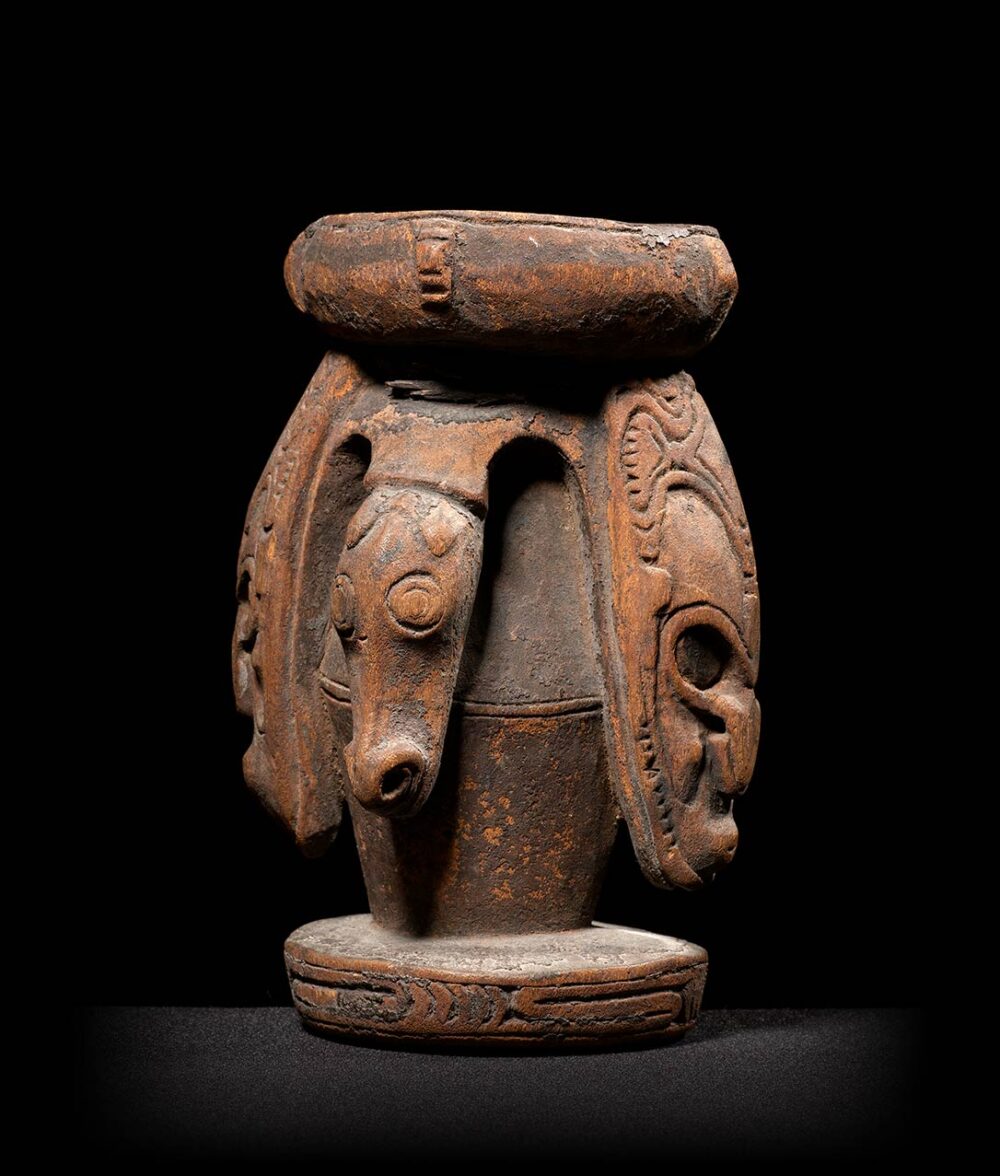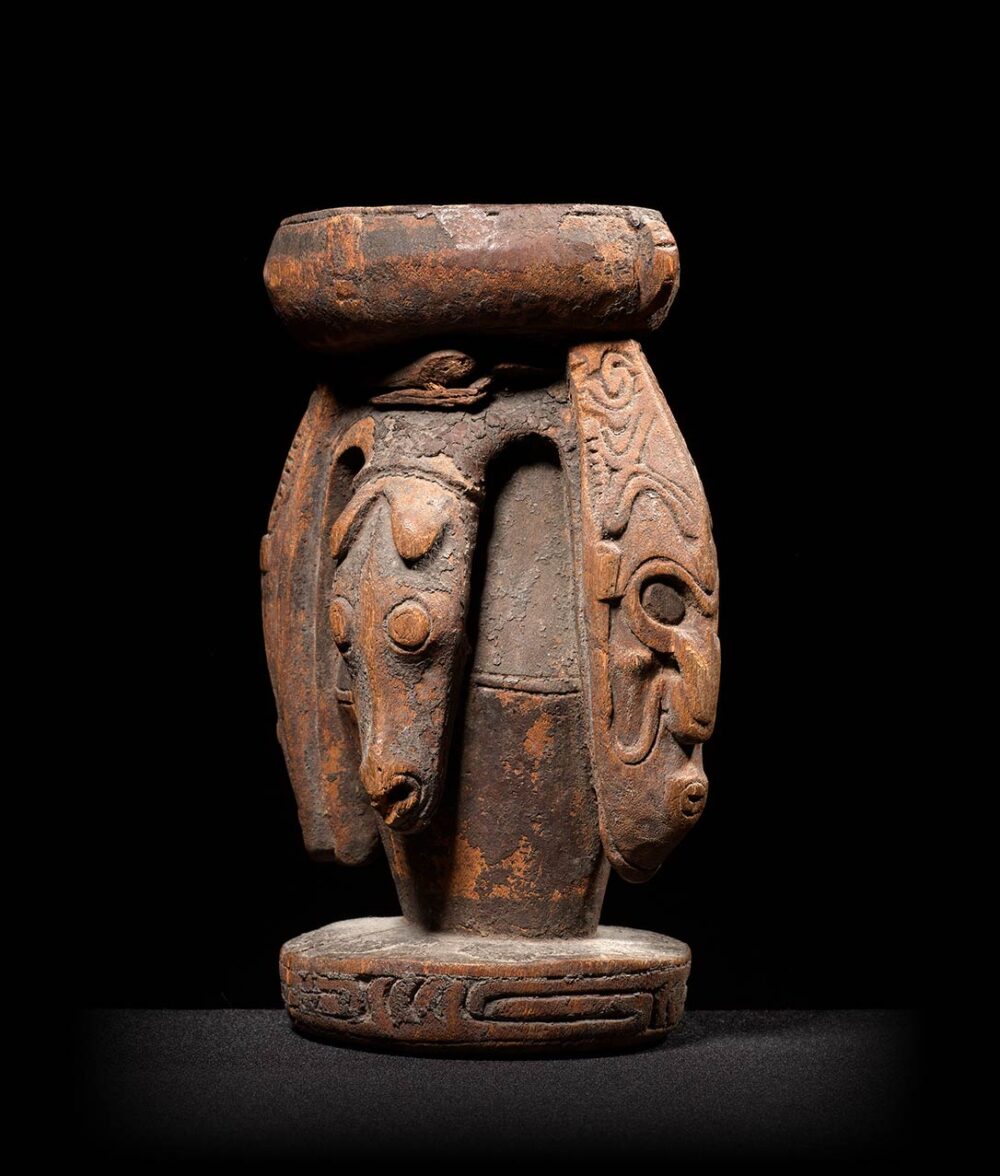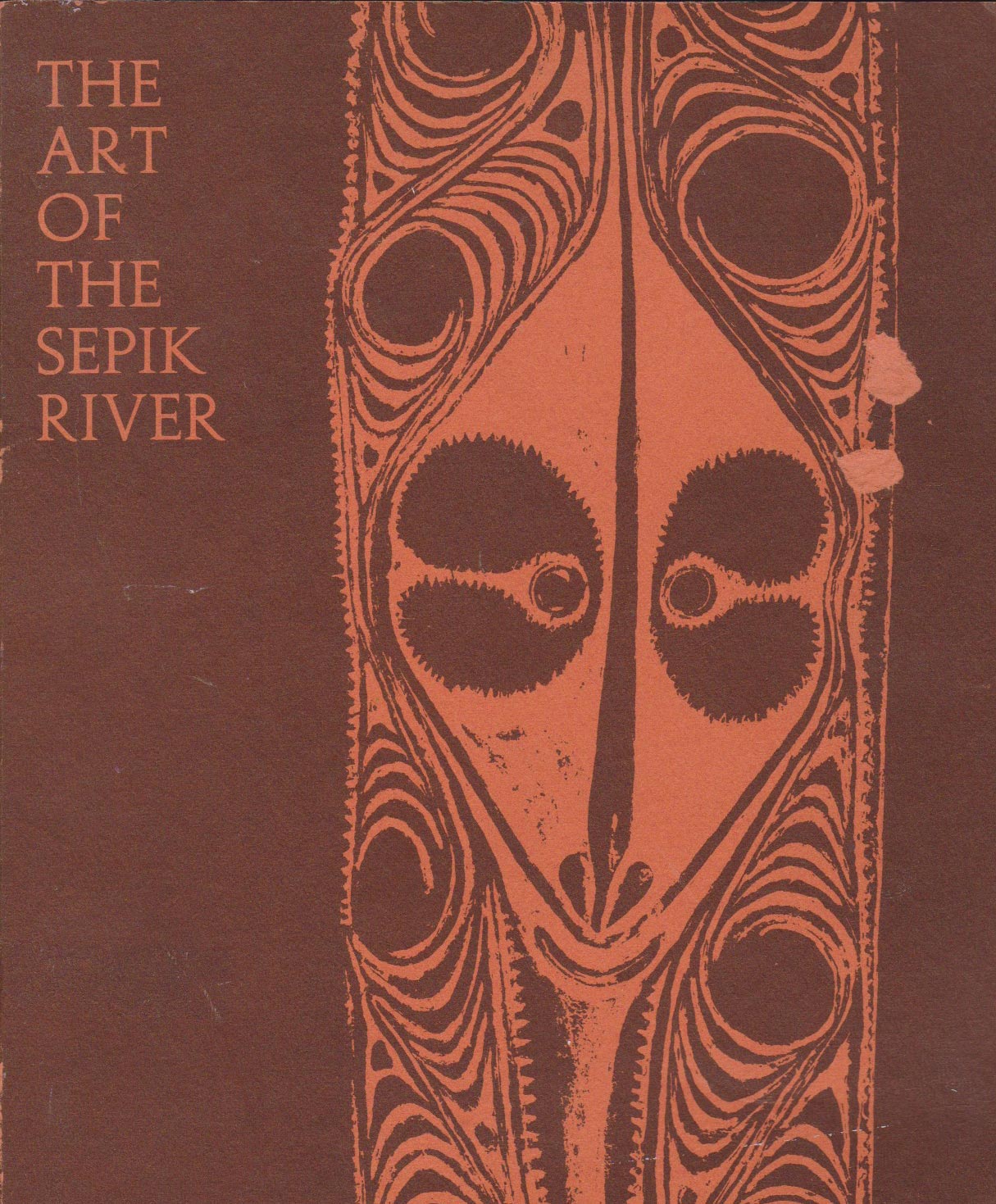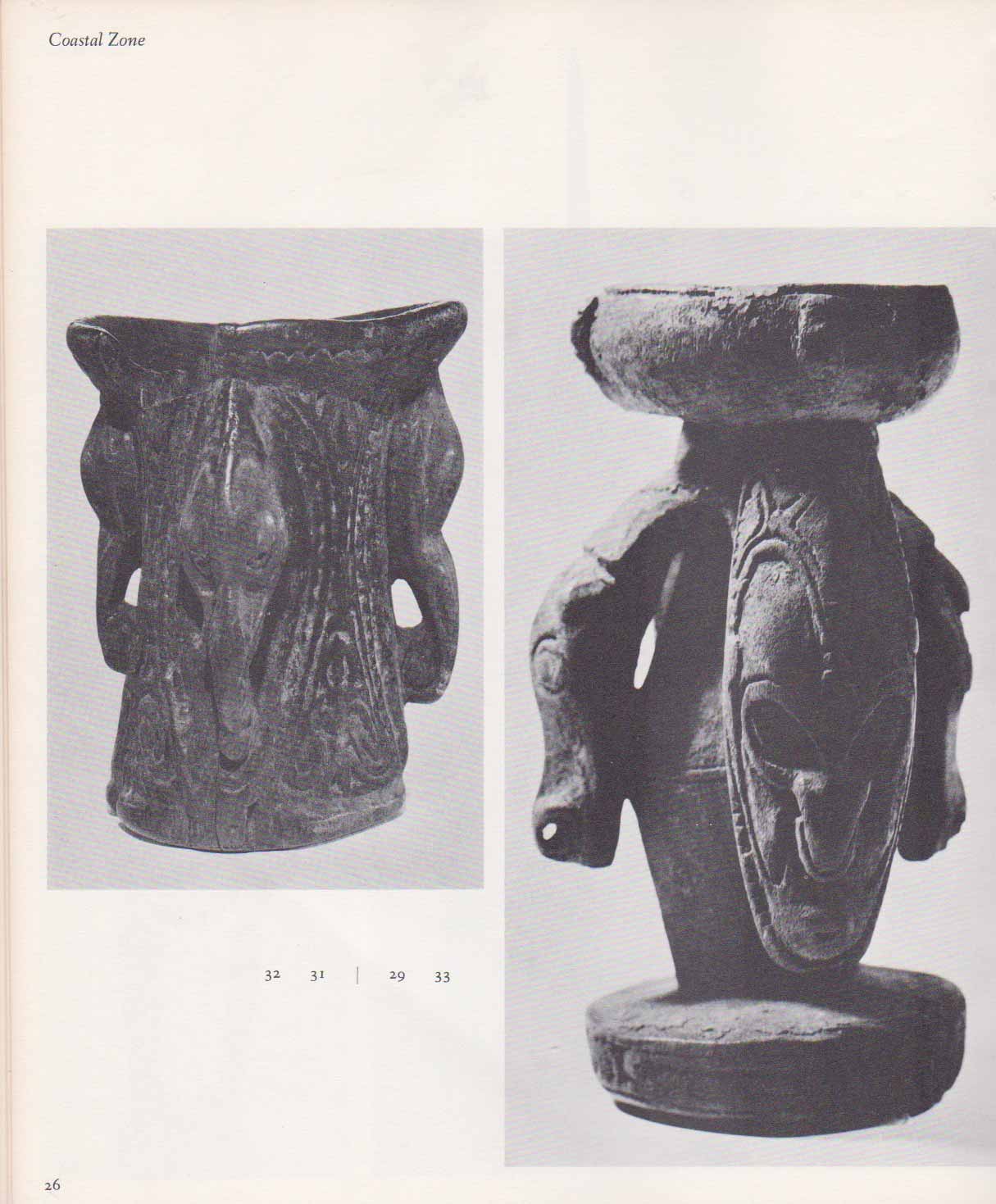Mortar
Murik Lakes, Papua New Guinea
19th-Early 20th c.
Provenance: Stanley Marcus Collection, Dallas. Jolika collection, Marcia and John Friede, Rye
Published: Wardwell, Allen, “The Art of the Sepik River”, The Art Institute of Chicago, 1971, fig. 31.
Exhibited: The Art Institute of Chicago, “The Art of the Sepik River”, October 16-November28, 1971.
This intricate mortar, crafted with superlative quality, stands as one of the most inventive examples I’ve ever had the pleasure of handling. Notably, the two masks and flying fox heads have been meticulously carved in the round, imparting a subtle life-like dynamism rarely witnessed in Sepik mortars. The artisan skillfully designed each face to project outward from the mortar’s column, creating a captivating three-dimensional effect.
To truly appreciate the artistic greatness of this piece, one must experience it in person. The patina inside the bowl bears witness to extensive use, displaying significant encrustation. Meanwhile, the outer surface of the mortar has acquired a smooth, tactile quality through generations of careful handling. The wood’s color has evolved into a stunning and delicate reddish-brown hue over time, adorned with areas of encrustation. This extraordinary piece remains in excellent condition, a testament to its enduring beauty and craftsmanship.
Mortar
Murik Lakes, Papua New Guinea
19th-Early 20th c.
Provenance: Stanley Marcus Collection, Dallas. Jolika collection, Marcia and John Friede, Rye
Published: Wardwell, Allen, “The Art of the Sepik River”, The Art Institute of Chicago, 1971, fig. 31.
Exhibited: The Art Institute of Chicago, “The Art of the Sepik River”, October 16-November28, 1971.
This intricate mortar, crafted with superlative quality, stands as one of the most inventive examples I’ve ever had the pleasure of handling. Notably, the two masks and flying fox heads have been meticulously carved in the round, imparting a subtle life-like dynamism rarely witnessed in Sepik mortars. The artisan skillfully designed each face to project outward from the mortar’s column, creating a captivating three-dimensional effect.
To truly appreciate the artistic greatness of this piece, one must experience it in person. The patina inside the bowl bears witness to extensive use, displaying significant encrustation. Meanwhile, the outer surface of the mortar has acquired a smooth, tactile quality through generations of careful handling. The wood’s color has evolved into a stunning and delicate reddish-brown hue over time, adorned with areas of encrustation. This extraordinary piece remains in excellent condition, a testament to its enduring beauty and craftsmanship.














